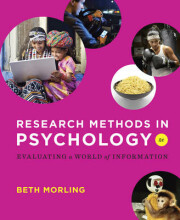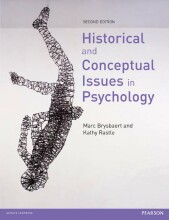Summary: Basic Skills In Mathematics
- This + 400k other summaries
- A unique study and practice tool
- Never study anything twice again
- Get the grades you hope for
- 100% sure, 100% understanding
Read the summary and the most important questions on Basic skills in mathematics
-
1 lecture 1
This is a preview. There are 10 more flashcards available for chapter 1
Show more cards here -
Explain what different object modes are?
- There are different types of objects in R: - numeric, e.g., 2, 0.03 - character, e.g., ‘a’, “b” - logical, TRUE, FALSE
- These are called modes
- To request the mode of object x use mode(x)
- a mode is the category an object belongs to.
-
What are characters and strings?
- Anything between single or double quotation marks is stored as a character, which can be used to encode strings:
- strings are kind of naming objects a different name.
- a character is the object, and the string is the second name that is given to that character, what it's also reffered by.
- characterObject <- 'this is a string'
- characterObject2 <- "this is also a string"
- Anything between single or double quotation marks is stored as a character, which can be used to encode strings:
-
Describe the logical mode.
- The logical mode indicates a Boolean object which can only be true (TRUE) or false (FALSE):
- logicalObject <- TRUE
- these logical objects can be used in compariosn tests;
- 1 == 1 # Is 1 equal to 1?
- ## [1] TRUE
-
How can you test and transform modes?
- You can use functions named is.mode to test the mode of an object:
- a <- 1.23 is.logical(a)
- ## [1] FALSE
- You can use functions named as.mode to transform objects into a different mode:
- "1" + 1 ## Error in "1" + 1: non-numeric argument to binary operator
- as.numeric("1") + 1
- ## [1] 2
- You can use functions named is.mode to test the mode of an object:
-
What does the rep function do?
- A vector containing copies of the same object can be created using rep(object,number_of_repetitions):
- For example, rep(1,3) creates the vector [1 1 1]
- Create a vector with n copies:
- v <- c('a','b','d')
- v
- ## [1] "a" "b" "d"
- rep(v,3)
- ## [1] "a" "b" "d" "a" "b" "d" "a" "b" "d"
-
What does the sample function do?
You can create a vector of n random samples from another vector using sample(vector_to_sample_from, n)- v1 <- seq(1, 4, 0.5)
- v2 <- sample(v1, 4)
- v2
- ## [1] 2.0 3.5 4.0 1.5
-
How can you perform mathematical computations with vectors?
- You can perform elementwise operations on vectors:
- a <- c(10,20,30)
- b <- 1:3
- a + b # Add each element in a with the same element in b
- ## [1] 11 22 33
- a * b # Multiply each element in a with the same element in b
- ## [1] 10 40 90
- You can perform elementwise operations on vectors:
-
How can you apply logical implications to vectors?
- You can apply logical operations to vectors:
- a <- c(10,20,30)
- b <- c(5,20,50)
- a < 20 # Test each element of a if it is smaller than 20
- ## [1] TRUE FALSE FALSE
- You can apply logical operations to vectors:
-
What is indexing and how do you do it?
- You can select a subset of vector element using indexing
- Using square brackets [ and ], you can indicate which elements to return as:
- A vector containing numbers of the elements you wish to keep
- a[5] # Get the fifth element of vector a
- a[c(1,5)] # Get the first and fifth element of vector a
- A minus sign followed by the element you wish to omit
- a[-5] # Get everything except the fifth element of vector a
- A vector containing a TRUE or FALSE for each element, TRUE indicating you want to keep the element
- a < 5
- ## [1] TRUE TRUE FALSE FALSE FALSE
- You can select a subset of vector element using indexing
-
How do you index the values of a variable?
Type datafilename$variable
- Higher grades + faster learning
- Never study anything twice
- 100% sure, 100% understanding

































